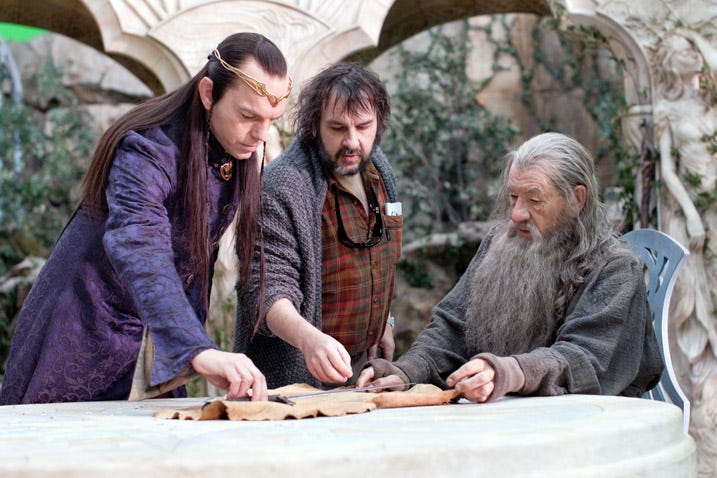Adding tension to narrative TTRPG scenes, step by step
Enter, stage left... the Scene PARTNER!
Making Great Scenes at your Game Table — a series
Preface: Everyday gamers don’t always know how to make great scenes
Adding tension by introducing a Scene Partner
Ending out scenes with ‘Scene Breakers’ and resolving the scene
Adding ‘Minor Scenes’ to add action and movement to our story
We all need one another, and each in our own way. Some of us need a helping hand, or affirmation, or vital resources, or a lifesaving intervention, or even just a kind word. But too often, we cannot meet one another’s needs, because we don’t have the power, because we have terrible secrets, sometimes because we just don’t want to.
This is the heart of Dramatic Scenes: One person needs something from another. Who has the power? Will they overcome whatever stands in their way? This is what compelling relationships — and compelling scenes — are made of, and brings us to the next ingredient in our scene structure.
Introducing: The Scene PARTNER!
In our process, we’ve set the scene by picking a FOCUS character, giving them an ACTION to do, and an interesting place to do it. Now, another player who wants to step up to the plate can volunteer to become the PARTNER.
The partner’s job is to enter the scene with a pressing MOTIVE. Here’s what I have so far for the menu of options they can pick from:
to GET something you need
to ASSIST in the task
to ADVOCATE your cause
to CONFRONT for change
to offer COMFORT
to PROVE your value
to LEARN something vital
These are meant to be a comprehensive and flexible list of MOTIVES that can encompass anything that is the subject of a scene, big or small.
So this is what goes below our Set the Scene section…
Pretty good! Whoever decides to be the PARTNER can glance at this list and pick a MOTIVE that sounds fun. After this, each MOTIVE will have its own prompts and decisions that do the following thing:
Some prompts to help the PARTNER flesh out their MOTIVE.
Final scene setting to describe how these two characters find one another.
An opportunity for the FOCUS to reject the PARTNER.
Strategies the PARTNER can take to satisfy their MOTIVE.
Several ways out of the scene.
Let’s try it with the MOTIVE “to GET something you need.” Remember: A “need” can be anything, from a shoulder to cry on, to the passcode to the missile defense system. I’m just gonna show you what I put together:

There it is. Now imagine a flowchart like that for our other six MOTIVES on the list, and that’s this section! This is the narrative body of the scene, the site of conflict, and the place where we discover what tensions are developing between our two characters.
Your next question might be, “Wait, what the hell are Emotional Outburst and Dramatic Exit? What’s with the exclamation points??” Those are called Scene Breakers, the sometimes-planned, sometimes-discovered ways that we conclude and resolve our scenes, of which there are currently six options. And those will be the subject of the next post!!
Notes:
You might go “Jack, surely there are ways of having Dramatic Scenes without someone wanting something.” I assure you, this isn’t the case. You’ll be hard pressed to find a Dramatic Scene, or a definition of a good Dramatic Scene, that doesn’t essentially have a character driven by a need at its heart. Look closely!
One of my favorite things about this is that we get a complicated interplay without deciding in advance what a scene is “about” in advance. We’re playing to find out the answer!
On that note, you might be wondering: “Wait, so the FOCUS character… isn’t necessarily the protagonist, in the traditional sense? Seems like that’s actually the PARTNER.” Hard to know! It’s an interesting question, but one that is also intensely problematized by a multi-player narrative game. Who’s the protagonist? God, who the f&%$ knows? I guess we’re playing to find that out too.





Very interesting phrase used there ‘What does the camera see?’ To me this suggests something like my favourite form of meta-gaming where I might have a character say or do something and then follow it immediately by describing - out of character - some facial expression or gesture that betrays any discrepancy between superficial words and actions and actual motive or intent. In some cases, I might even be so explicit as to say ‘What my character just said is a lie’. I think these kinds of things are essential to give fellow players a full sense of the context of the sene so that they can, in turn, make ‘meta choices’ to inform how it plays out.